
Costa Rica, officially the Republic of Costa Rica, is a sovereign state in Central America, bordered by Nicaragua to the north, the Caribbean Sea to the northeast, Panama to the southeast, the Pacific Ocean to the southwest, and Ecuador to the south of Cocos Island. It has a population of around 5 million in a land area of 51,060 square kilometers. An estimated 333,980 people live in the capital and largest city, San José with around 2 million people in the surrounding metropolitan area.
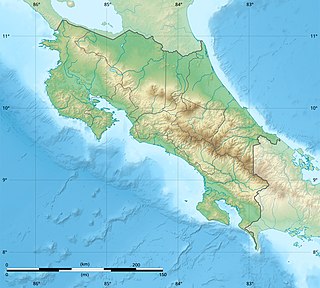
Costa Rica is located on the Central American Isthmus, surrounding the point 10° north of the equator and 84° west of the prime meridian. It borders both the Caribbean Sea and the North Pacific Ocean, with a total of 1,290 km of coastline.
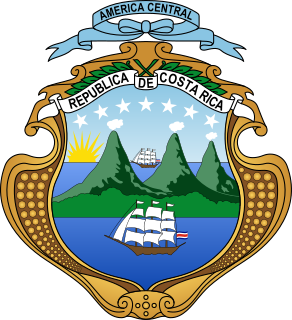
The politics of Costa Rica take place in a framework of a presidential, representative democratic republic, with a multi-party system. Executive power is exercised by the president and his cabinet, and the President of Costa Rica is both the head of state and head of government. Legislative power is vested in the Legislative Assembly. The president and 57 Legislative Assembly deputies are elected for four-year terms. The judiciary operates independent of the executive and the legislature but remains involved in the political process. Costa Rica is a republic with a strong system of constitutional checks and balances. Voting is compulsory in Costa Rica but it is not enforced.

Central America is a region found in the southern tip of North America and is sometimes defined as a subcontinent of the Americas. This region is bordered by Mexico to the north, Colombia to the southeast, the Caribbean Sea to the east and the Pacific Ocean to the west and south. Central America consists of seven countries: Belize, Costa Rica, El Salvador, Guatemala, Honduras, Nicaragua and Panama. The combined population of Central America is estimated to be between 41,739,000 and 42,688,190.

San José is the capital and largest city of Costa Rica, and the capital of the province of the same name. It is located in the centre of the country, specifically in the mid-west of the Central Valley, and contained within San José Canton. San José is the seat of national government, the focal point of political and economic activity, and the major transportation hub of Costa Rica. The population of San José Canton was 288,054 in 2011, and San José’s municipal land area measures 44.2 square kilometers, with an estimated 333,980 residents in 2015. The San José metropolitan area stretches beyond the canton limits and includes the cities of Alajuela, Heredia and Cartago, with an estimated population of over 2 million in 2017. The city is named in honor of Joseph of Nazareth.

The CONCACAF Gold Cup is the main association football competition of the men's national football teams governed by CONCACAF, determining the continental champion of North America, Central America, and the Caribbean. The Gold Cup is held every two years. It was previously referred to as the CONCACAF Championship before being renamed to the CONCACAF Gold Cup starting in 1991.
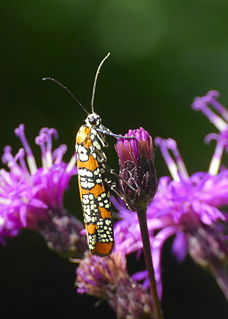
The ailanthus webworm is an ermine moth now found commonly in the United States. It was formerly known under the scientific name Atteva punctella. This small, very colorful moth resembles a true bug or beetle when not in flight, but in flight it resembles a wasp.

Mount Chirripó is the highest mountain in Costa Rica with an elevation of 3,821 meters. It is located in Chirripó National Park and is noted for its ecological wealth. The mountain was named "Chirripo," meaning "land of eternal waters", by Native Americans because there are many lakes and streams around the mountain. The high peaks in Chirripó National Park and La Amistad International Park host important areas of Talamancan montane forest and Costa Rican Páramo with high endemism and an extremely high biodiversity. The peaks of these mountains constitute sky islands for many species of plants and animals. Snow has not fallen on the peak in the past 100 years or so, according to the University of Costa Rica, but hail is sometimes reported.
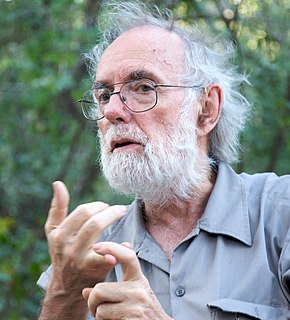
Daniel Hunt Janzen is an American evolutionary ecologist, and conservationist. He divides his time between his professorship in biology at the University of Pennsylvania, where he has been since 1976, and his research and field work in Costa Rica, where he is an ad honorem technical advisor for two long-term and long-range projects, which he conceived and initiated in the early 1970s: Area de Conservación Guanacaste, one of the oldest, largest and most successful habitat restoration project in the world, 1.430 km², located just south of the Costa Rica-Nicaragua border, between the Pacific Ocean and the Cordillera de Tilaran; and the Instituto Nacional de Biodiversidad (INBio), a research organisation that has taken the task of inventorying, cataloguing and describing the country's gigantic natural endowment. He has been influential in the creation of a "model" park, the Area de Conservacion Guanacaste in Costa Rica's northern region of Guanacaste. This park exemplifies Dr. Janzen's beliefs about how a park should be run. It is known for being the site of considerable biological research and for forest restoration and community outreach.

The Wildlife of Costa Rica comprises all naturally occurring animals, fungi and plants that reside in this Central American country. Costa Rica supports an enormous variety of wildlife, due in large part to its geographic position between the North and South American continents, its neotropical climate, and its wide variety of habitats. Costa Rica is home to more than 500,000 species, which represents nearly 4% of the total species estimated worldwide, making Costa Rica one of the 20 countries with the highest biodiversity in the world. Of these 500,000 species, a little more than 300,000 are insects.

The great green macaw, also known as Buffon's macaw or the great military macaw, is a Central and South American parrot found in Nicaragua, Honduras, Costa Rica, Panama, Colombia and Ecuador. This species lives in the canopy of wet tropical forests and is highly dependent on the almendro tree . Two allopatric subspecies are recognized; the nominate subspecies occurs from Honduras to West Colombia, while Ara ambiguus guayaquilensis is isolated on the Pacific side of the continent in Ecuador, and possibly South-Western Colombia.

Arenal Volcano National Park is a Costa Rican national park in the central part of the country, forming the Arenal Tilaran Conservation Area. The park encompasses the Arenal Volcano, which "was" the most active in the country, which had previously been believed to be dormant until a major eruption in 1968. It neighbors Lake Arenal, which is the site of the country's largest hydroelectricity project, the Lake Arenal Dam.
Holdridge's toad is a species of toad endemic to Costa Rica. In October 2008, it was declared extinct by the International Union for the Conservation of Nature in its Red List since the species had not been seen since 1987, despite years of extensive searches. However, the species was rediscovered in 2010 by a Costa Rican herpetologist and is now classified as critically endangered. It is believed that the species is most threatened by the presence of the chytrid fungus in its habitat.

The plain chachalaca is a large bird in the chachalaca, guan and curassow family Cracidae. It breeds in tropical and subtropical environments from mezquital thickets in the Rio Grande Valley in southernmost Texas, United States to northernmost Costa Rica. In Central America, this species occurs in the Pacific lowlands from Chiapas, Mexico to northern Nicaragua and as a separate population in Costa Rica, where its range is separated by a short distance, as a disjunct population.

The Costa Rica national cricket team represents the Republic of Costa Rica in international cricket. The team is organised by the Costa Rica Cricket Federation, which became an affiliate member of the International Cricket Council (ICC) in 2002 and an associate member in 2017. Costa Rica's first recorded international match came in April 2002, when it toured Panama and played against the Panamanian national side. The team's first international tournament was the inaugural edition of the Central American Championships, played in Belize in 2006. It has since regularly fielded teams in that tournament, and also made its debut in ICC Americas tournaments in 2010, at the 2010 Division Four event in Mexico.

Miller's mastiff bat is a species of bat in the family Molossidae. It is found in Brazil, Colombia, Costa Rica, Guyana, Mexico, Nicaragua, and Venezuela.

Christianity is the largest religion in Costa Rica, with Roman Catholics having the most adherents. Roman Catholicism is the state religion, and the government generally upholds people's religious freedom in practice.
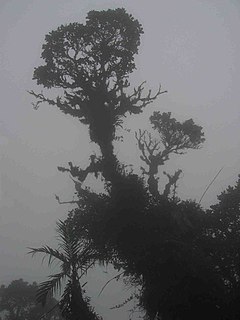
The La Amistad International Park, or in Spanish Parque Internacional La Amistad, formerly the La Amistad National Park, is a Transboundary Protected Area in Latin America, management of which is shared between Costa Rica and Panama, following a recommendation by UNESCO after the park's inclusion in the World Heritage Site list.
Abortion in Costa Rica is severely restricted by criminal law. Currently, abortions are allowed in Costa Rica only in order to preserve the life or physical health of the woman. Abortions are illegal in almost all cases, including when the pregnancy is a result of rape or incest and when the fetus suffers from medical problems or birth defects. Both social and economic factors have led to this legal status. It remains unclear whether abortions are legal to preserve the mental health of the woman, though the 2013 United Nations abortion report says Costa Rica does allow abortions concerning mental health of a woman.
Cinema of Costa Rica refers to the film industry based in Costa Rica. The Costa Rican cinema comprises the art of film and creative movies made within the nation of Costa Rica or by Costa Rican filmmakers abroad.




















